How To Draw The Middel Colinies Vill
Whether it's beautiful cherry blossoms, fresh green trees, or autumn leaves turning ruby and yellowish, trees add together seasonality and flair to your illustrations.
A background with a tree can be expressed by using tones and materials, merely it is difficult to find a tree that matches your prototype.
And so, here are some basic tips on how to draw a tree then you can become the tree you envisioned.
1. Depict the positioning of the leaves and trunk
The first step is to draw the position of the tree and the size of the tree in which office of the tree will be drawn.
The tree can exist roughly divided into two parts, the foliage part and the trunk function, so I draw the positioning of these two parts showtime.

two. Draw the positioning of the leaf parts
When cartoon a tree, the leaves are often the most confusing office of the tree.
Equally yous can run into in the photo of a tree with few leaves, the leaves are fastened to each co-operative in a dodder.
When you depict the leaves, you should think of this clump as one part of the tree and draw it every bit you go, and then information technology's easier to create a three-dimensional effect.
Once you take fatigued the position of the leaves and torso, you can draw the position of each part roughly by referring to a photograph.
At this point, I draw a simple circle to locate the parts without worrying virtually the shape of the leaves.
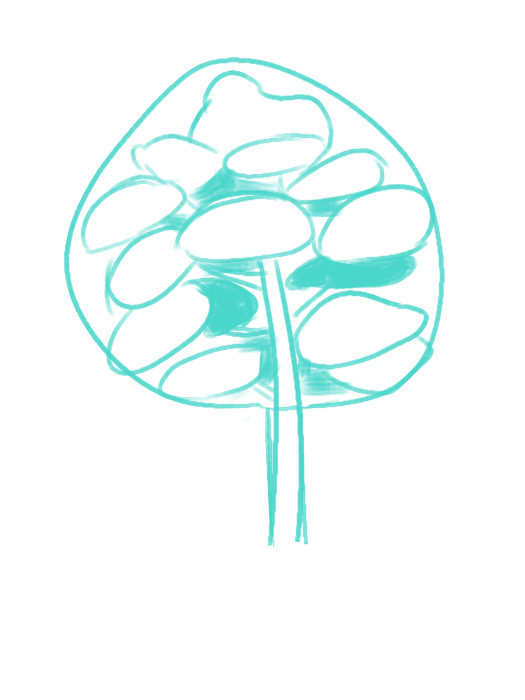
three. Draw the base of operations
When the positioning is completed, create a new layer and draw the base in one color.
Cull a colour for the darkest shadow image and draw the silhouette of the tree.
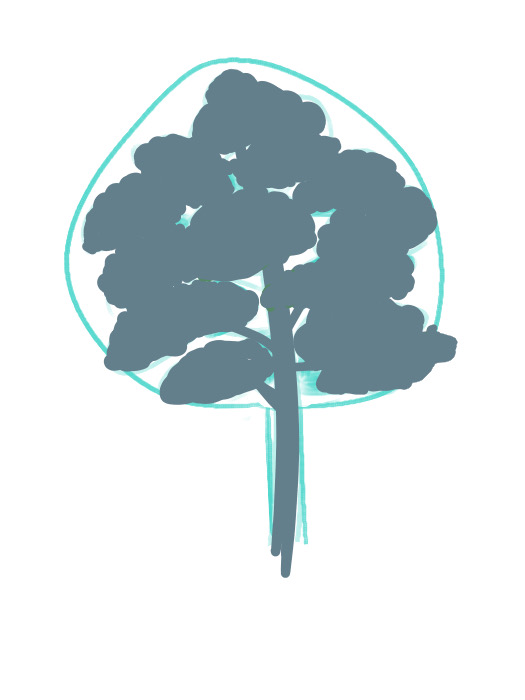
The sunlit areas appear xanthous and the shadows appear blue.
Therefore, I have chosen a strong bluish color for the shadows.
The underlying color can exist adapted to some extent by using filters afterwards, so don't worry also much nigh the color.
4. Add color to the base
One time you've painted the primer, create a new layer on top of the underlying layer and printing the clipping button.
By doing this, you lot can color only the underlying surface area, so let'south roughly low-cal and darken the underlying layer.

Here is an image of the light hitting me from the top left corner, making the yellow-green to blue color increasingly more than intense from the light to the dark.
(I'one thousand using an airbrush.)
5. Painting the lightest office of the foliage
Once the base is drawn, create a new layer and describe the brighter parts of the leaves by clipping them.

What I'm using hither is non a pen brush with a articulate outline, but an acrylic castor that can be blurred past adjusting the brush force per unit area.
Since the expanse is exposed to the lord's day, I will paint information technology with a slightly yellowish green color.
Over again, don't worry too much virtually the shape of the leaves, but pigment a firmer shape.
half-dozen. Connect the base of operations and the calorie-free areas
The colors of the light areas and the darker areas underneath announced to be floating abroad from each other, so we'll add together an intermediate color to blend them in.
Create a new layer underneath the light area layer and apply the neutral color by clipping.
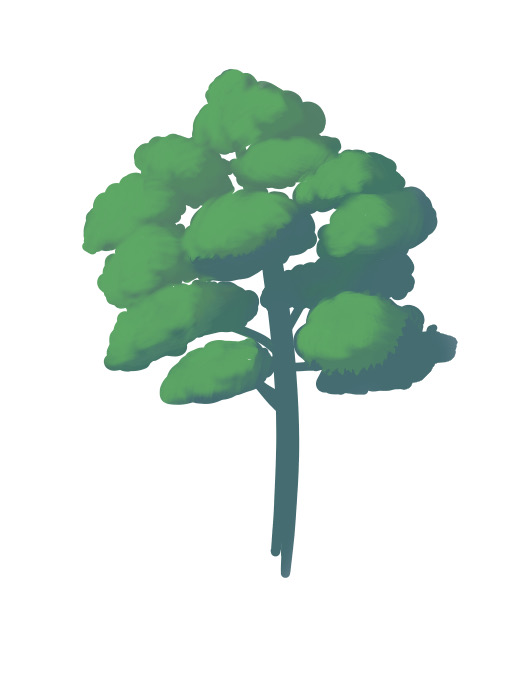
vii. Polish a soft light
Once the light areas and the base of operations are blended in, at present create a layer at the tiptop and airbrush a soft light to bring out more light.
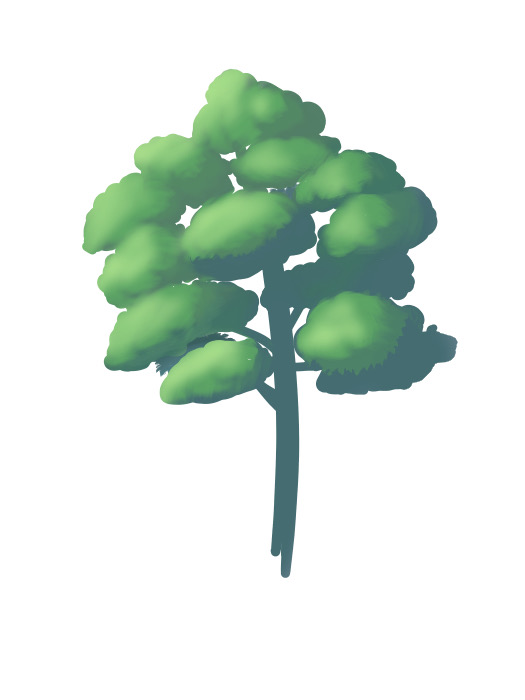
8. Painting the texture of leaves
I used a watercolour castor to add the chunky silhouette of the leaves to each role of the image, as it looks shine as it is.
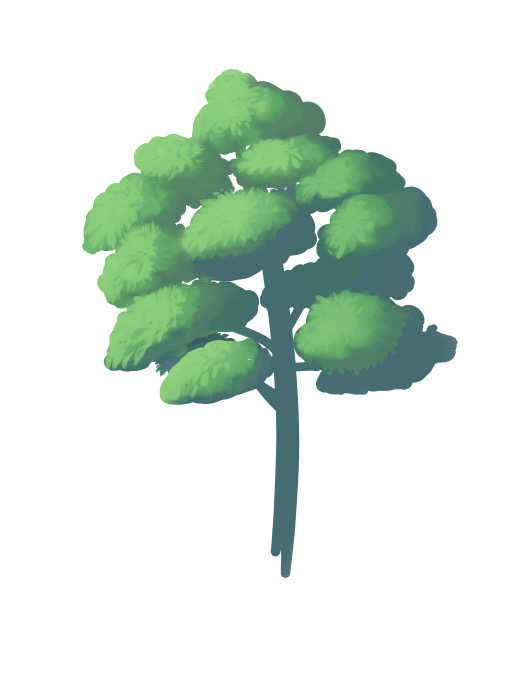
9. Outline the leaves
After drawing the silhouette of the leaves on the part, it's time to contour the entire image.
Trim the base layer and add leaves to make the silhouette look more similar that.

Here, the underlying layer is scraped off with a pen brush (transparent color).
[How to cull a transparent color]
Next to the colour selection window square, there is a plaid foursquare.
You can select a transparent color by pressing on this expanse.

ten. Adding Shadows
In one case the shape is in place, add a few more than darker shadows to give it a well-baked, iii-dimensional look.
Create a new layer at the height and clipping, and then use the airbrush to draw shadows on the leaves and other objects in the back of the image.

You can learn more near finishing the tree, including highlights from the trunk area after this, in the article How to Draw a Tree (2), which you can also refer to here.
Source: https://medibangpaint.com/en/use/2020/07/how-to-draw-tree-1/
Posted by: compoorwastincer.blogspot.com


0 Response to "How To Draw The Middel Colinies Vill"
Post a Comment